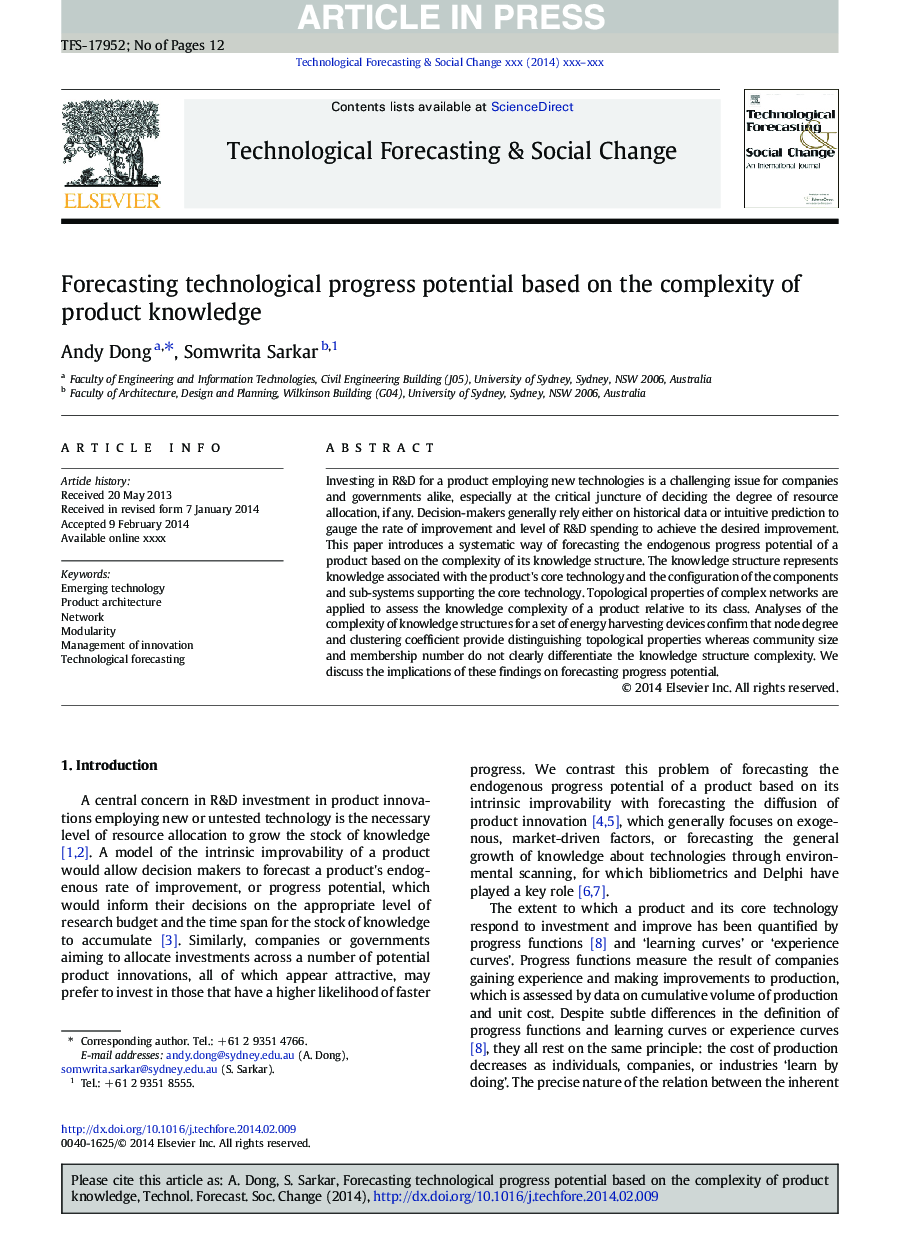| Article ID | Journal | Published Year | Pages | File Type |
|---|---|---|---|---|
| 7256978 | Technological Forecasting and Social Change | 2015 | 12 Pages |
Abstract
Investing in R&D for a product employing new technologies is a challenging issue for companies and governments alike, especially at the critical juncture of deciding the degree of resource allocation, if any. Decision-makers generally rely either on historical data or intuitive prediction to gauge the rate of improvement and level of R&D spending to achieve the desired improvement. This paper introduces a systematic way of forecasting the endogenous progress potential of a product based on the complexity of its knowledge structure. The knowledge structure represents knowledge associated with the product's core technology and the configuration of the components and sub-systems supporting the core technology. Topological properties of complex networks are applied to assess the knowledge complexity of a product relative to its class. Analyses of the complexity of knowledge structures for a set of energy harvesting devices confirm that node degree and clustering coefficient provide distinguishing topological properties whereas community size and membership number do not clearly differentiate the knowledge structure complexity. We discuss the implications of these findings on forecasting progress potential.
Keywords
Related Topics
Social Sciences and Humanities
Business, Management and Accounting
Business and International Management
Authors
Andy Dong, Somwrita Sarkar,
